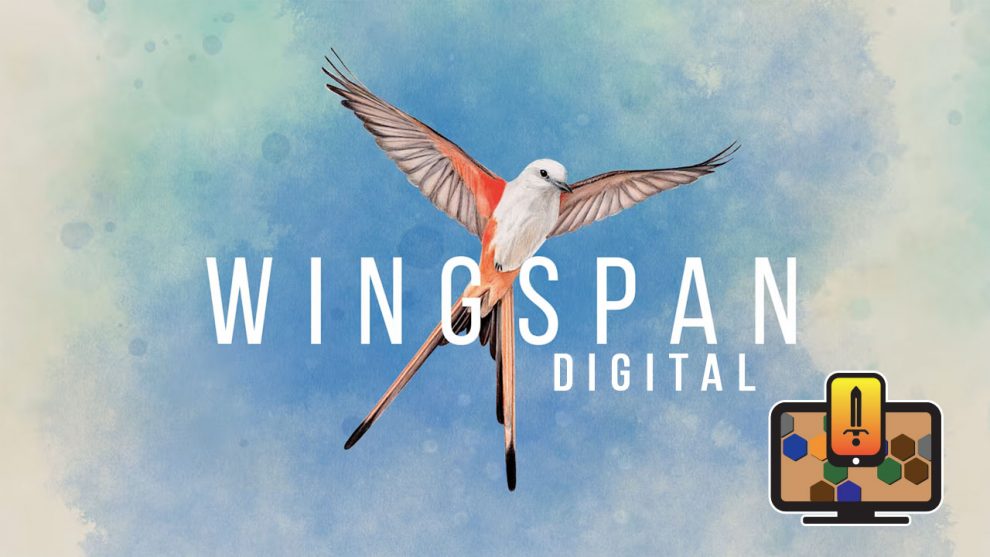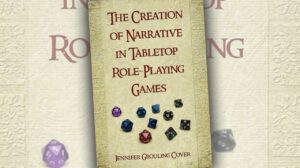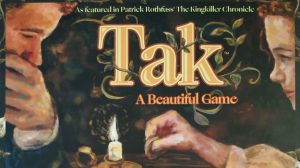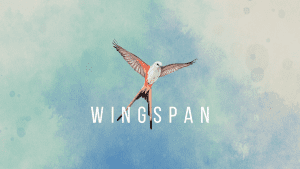
Wingspan has sold more than 200,000 copies worldwide since its introduction in 2019. Thanks to its combination of accessible game play, clever engine building, and inviting artwork, Wingspan, designed by Elizabeth Hargraves and published by Stonemaier Games, has become a favorite of gamers and non-gamers alike. In fact, chances are that you, dear reader, have played it at least once yourself.
As a result, while this review will reference how the game is played, I won’t be providing you with my typical How to Play section. However, in case you haven’t played Wingspan, fear not. Fellow Meeple Mountaineer Logan Giannini covered the rules in his review of the cardboard version of Wingspan.
As usual, I’m going to present the type of screen shots I’d like to see if I was reading your review of the digital version of a game to help me decide if it’s something I’d be interested in playing. If you’re just interested in what I think about this version of Wingspan, feel free to scroll down to my Thoughts section.
With all of that out of the way, let’s fly right into the Steam version of the game, shall we?
Set Up
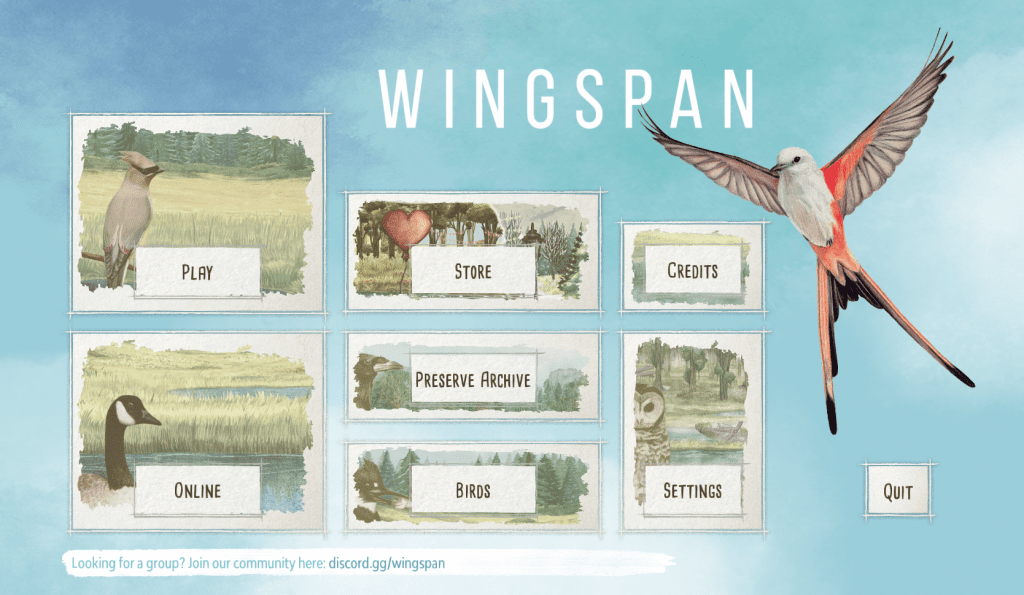
Wingspan’s Splash page gives you a good idea of how the game will be presented throughout the digital version–soothing colors, clear text, appealing illustrations of tranquil birds. What’s not to like?

Starting with the Play option in the upper left corner, you’re given the choice of creating a Custom Game or a game against the Stonemaier Automa. Since the Custom Game provides you with the gaming experience closest to the cardboard-on-the-table version, I’ll be sticking with the Custom Game in this review.
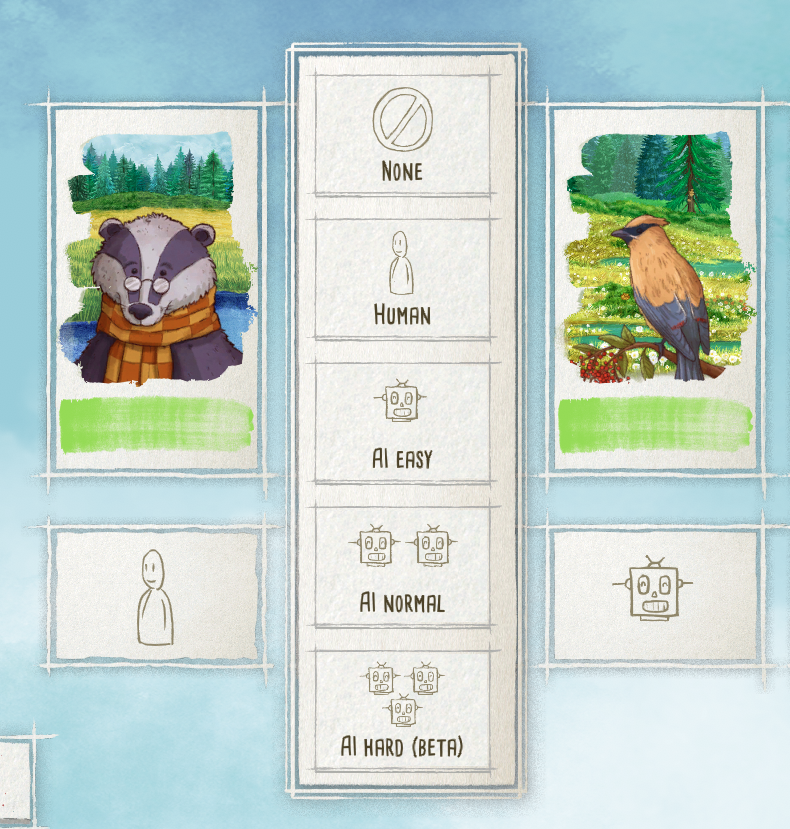
The digital version allows you to choose an avatar, an avatar for your AI opponent(s), and the difficulty level of the AI opponent(s). You can, of course, choose to play against a live person.
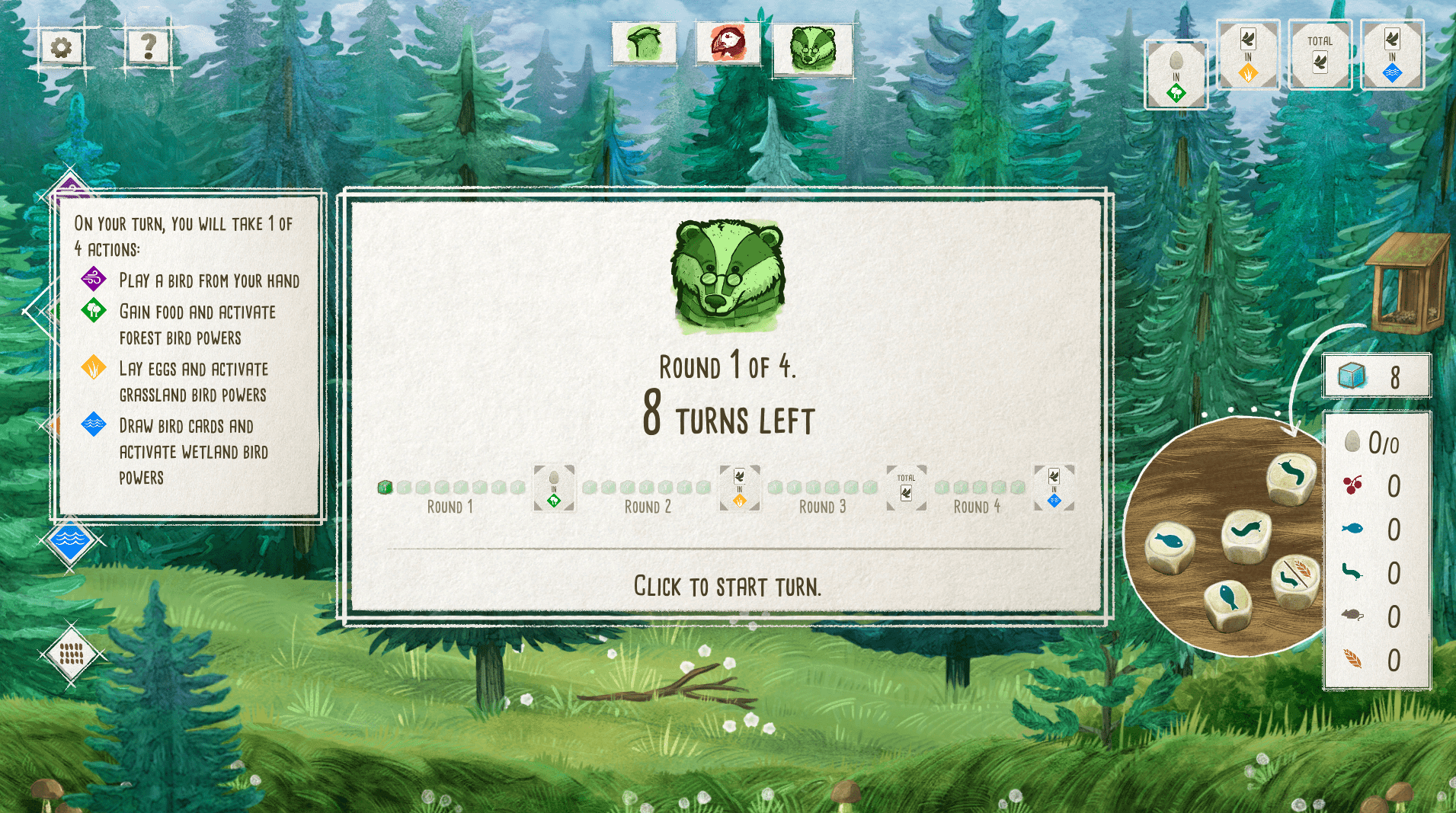
Each turn starts with a helpful reminder of how many turns there are remaining in the current round, as well as what the end-of-round goal is for the current round. Clicking on these tiles will provide a written description of the goal, which can be helpful.
Throughout the game, those end-of-round goals will be visible in the upper right corner of the screen. In the lower right, you’ll typically be able to see both the food currently available in the birdfeeder as well as your current available food. Above that long rectangle, is a reminder of how many turns are left in this round.
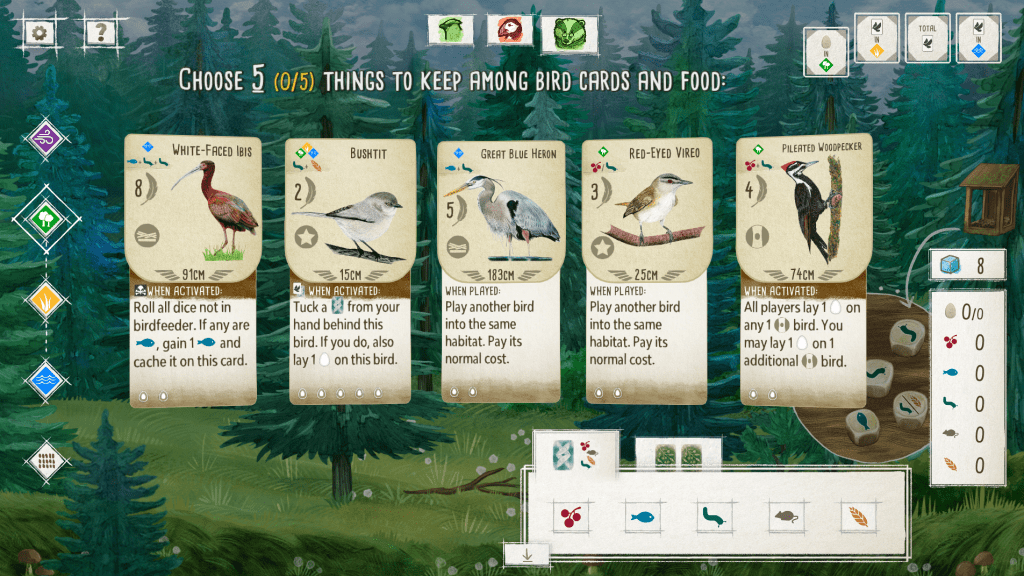
Your opening hand of five bird cards is shown, as are your opening food choices.
Each card is similar to its physical counterpart, with Habitats and required food in the upper left corner and point value, nest type and wingspan below that. The card bonus text and egg spaces are at the bottom of each card.
To the right of the Food tab is a tab for your opening hidden scoring bonuses. Select one of these to use during the game.
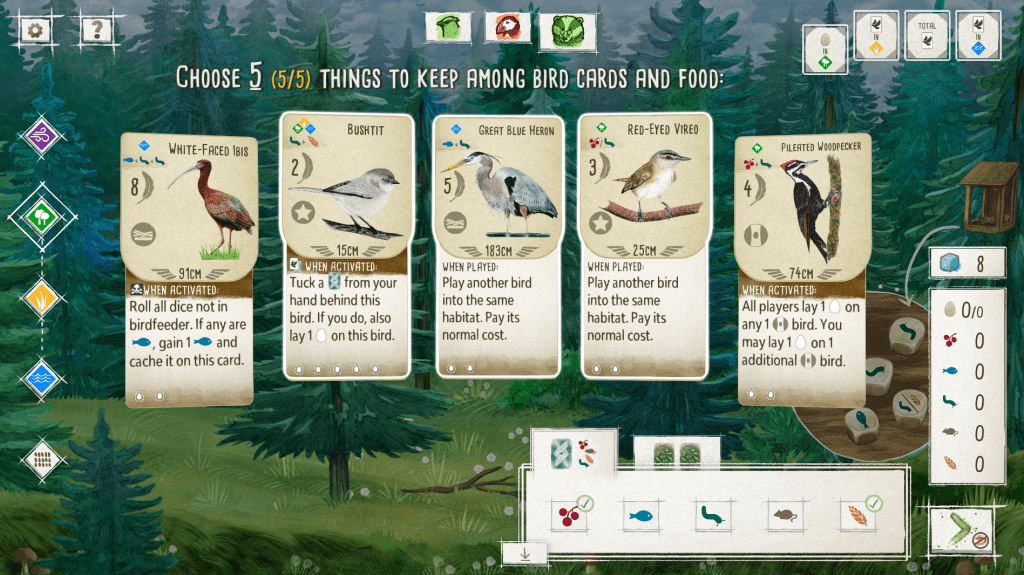
Clicking on a card will cause it to rise slightly. Clicking on food to keep will put a green check mark in the upper right corner.
Once you’ve selected a matching number of cards and food, a green right arrow will appear in the lower right corner. Clicking on this throughout the game will allow you to continue.
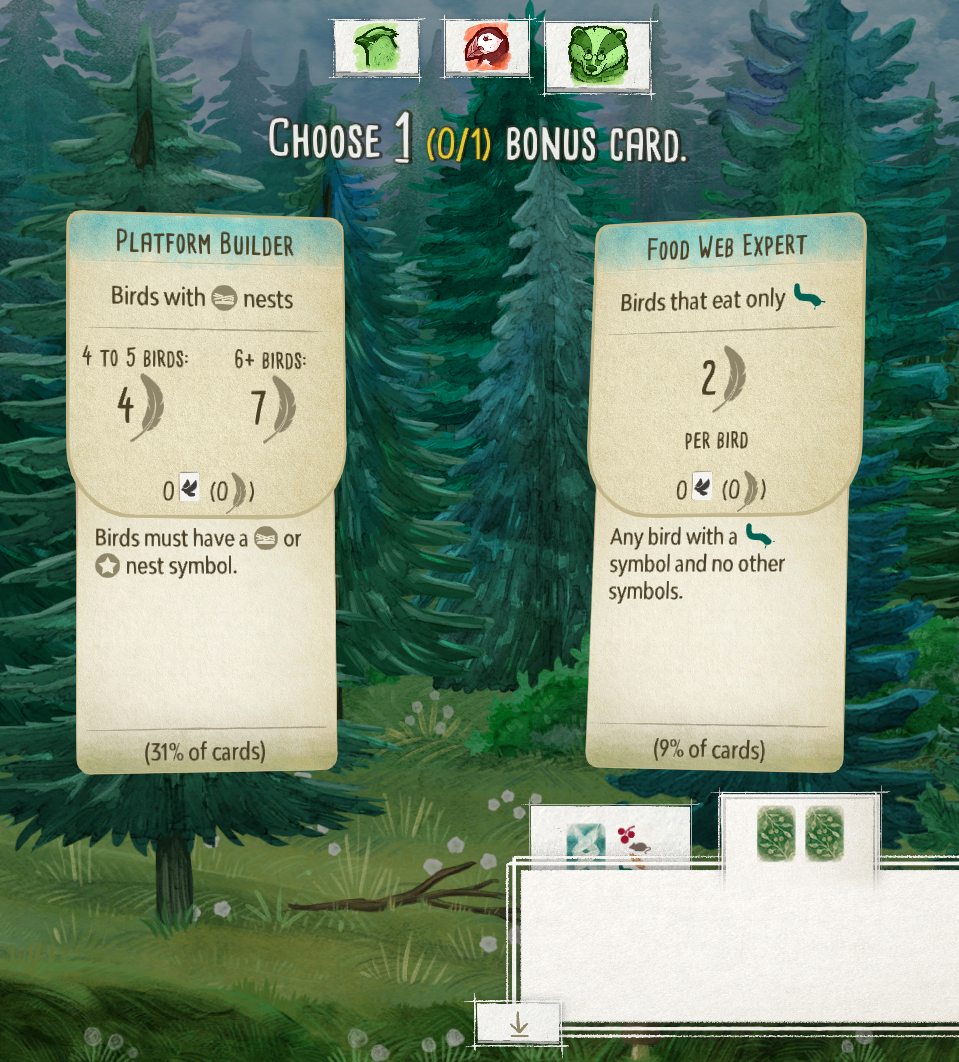
To the right of the Food tab is a tab for your opening hidden scoring bonuses. Select one of these to use during the game.
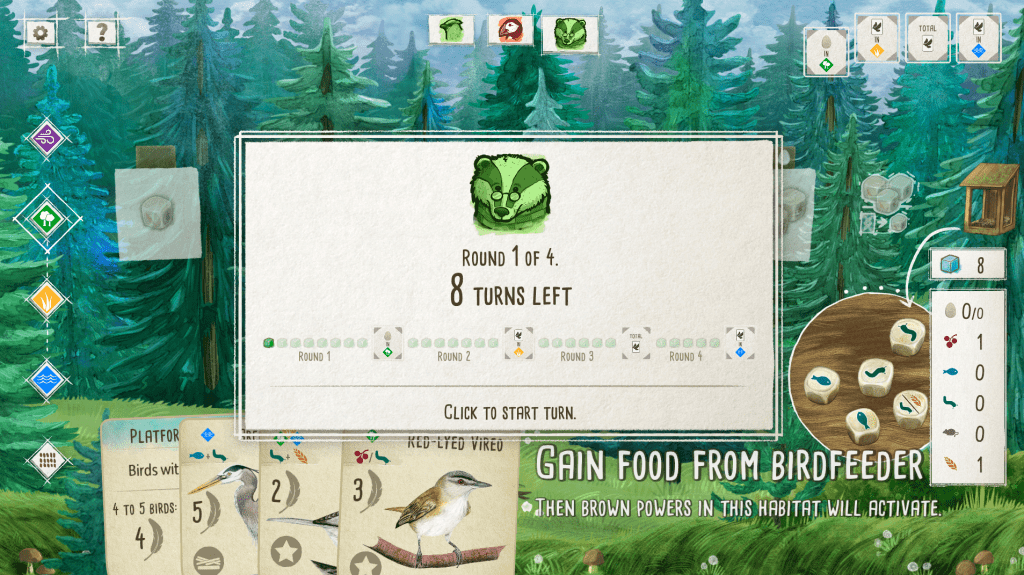
With your starting cards chosen and food selected, you are ready to begin the game. You may have noticed that the AI has helpfully rolled the food dice for you.
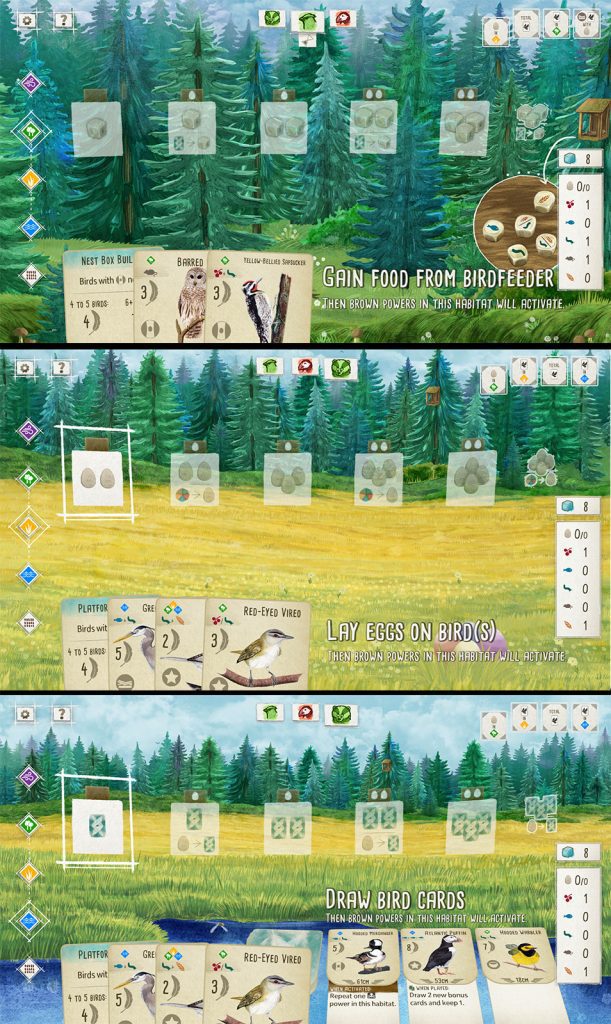
While the cardboard version of Wingspan displays all three Habitats on a single board, the digital version has separate layouts for each environment. Clicking on the diamond-shaped icon to the far left of the screen will toggle you back and forth between them.
Playing the Game

Playing a card into a Habitat is simple. Click on the icon to the left for the Habitat. If you have a card that can be played there and have the food required, the layout will let you know. The left-most space will highlight and the card will lift slightly in your hand of cards, shown at the bottom left.
Double-click the card or drag and drop it into place.

The AI will then ask you for the food required on the card to pay for the bird. Depending on the circumstances, the AI will offer you the choice of which type of food you wish to use. It will display one option; clicking on the Change button will allow you to select from other options as available.
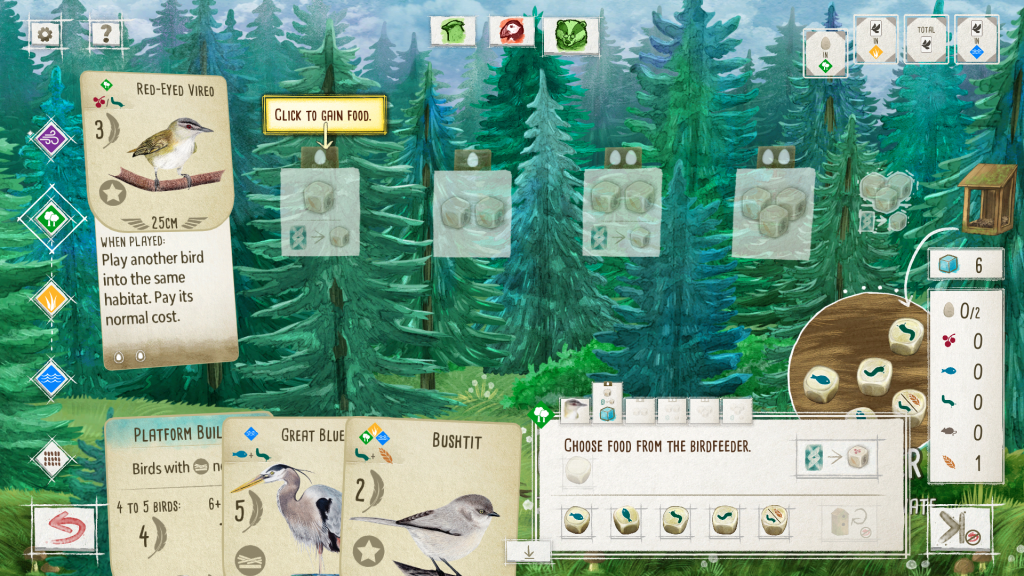
If you’re in the Forest to gain food, just click on the leftmost square. You’ll be able to select as much food as allowed. If you’re able to trade in a card for more food, click on the icon in the upper right corner of the “Choose Food from the Birdfeeder” window to do so.
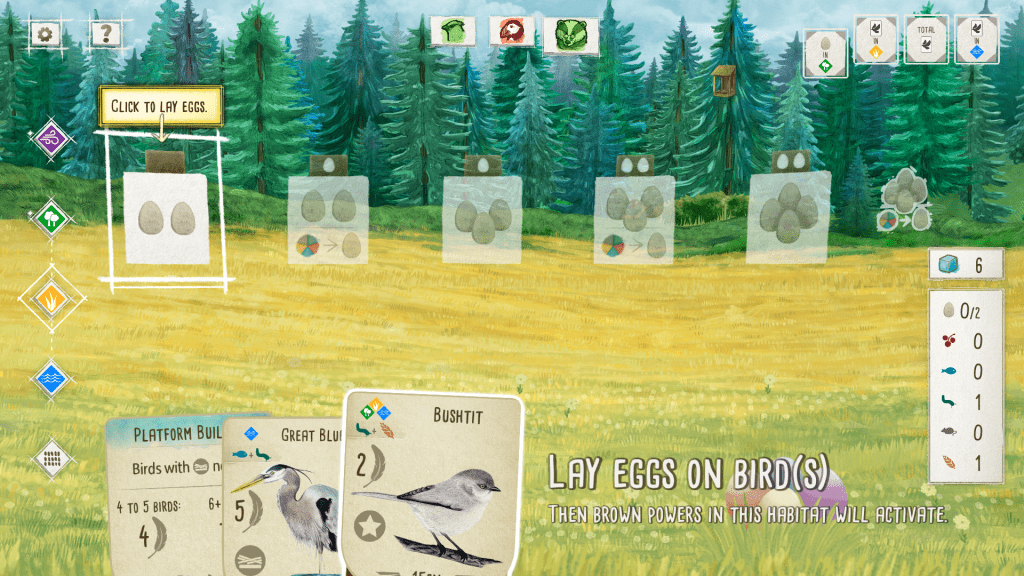
Similarly, if you want to Lay Eggs, click on the Grassland icon to the left. Then click on the leftmost Eggs icon to select the Lay Eggs option.
In this example, the Bushtit can be played in any Habitat. Since I have the food required to play the card, it raises slightly to show its availability.
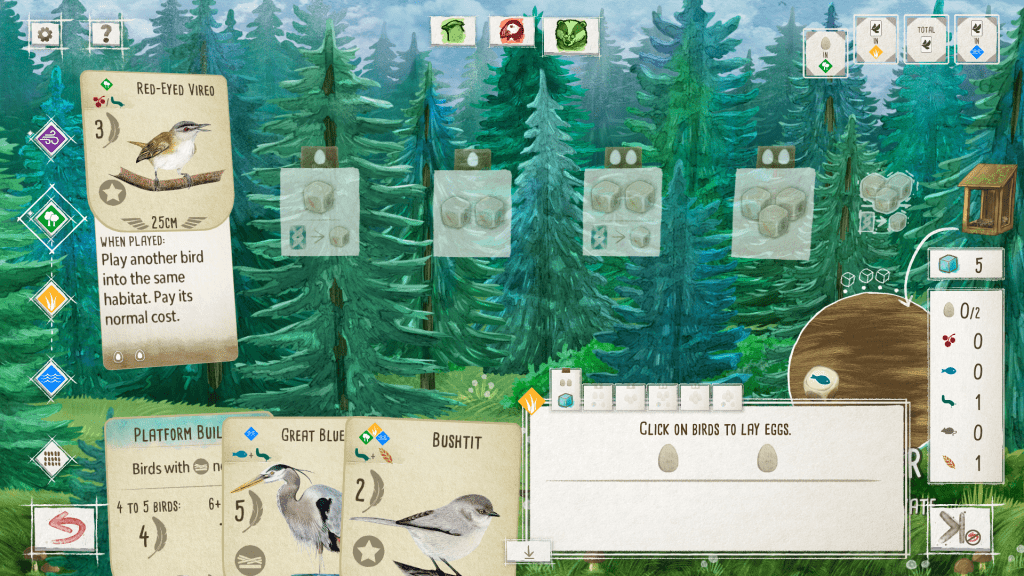
You can place Eggs on any card with an open Egg icon at the bottom. You may need to click on the Habitat icons to the far left to toggle between Habitats to find cards with available Egg icons.

If you need to Spend an Egg to play a card in a Habitat, you’ll click on an Egg at the bottom of a card to spend it.
Again, you may need to click on the Habitat icons to the left to find a card with an Egg you can spend.
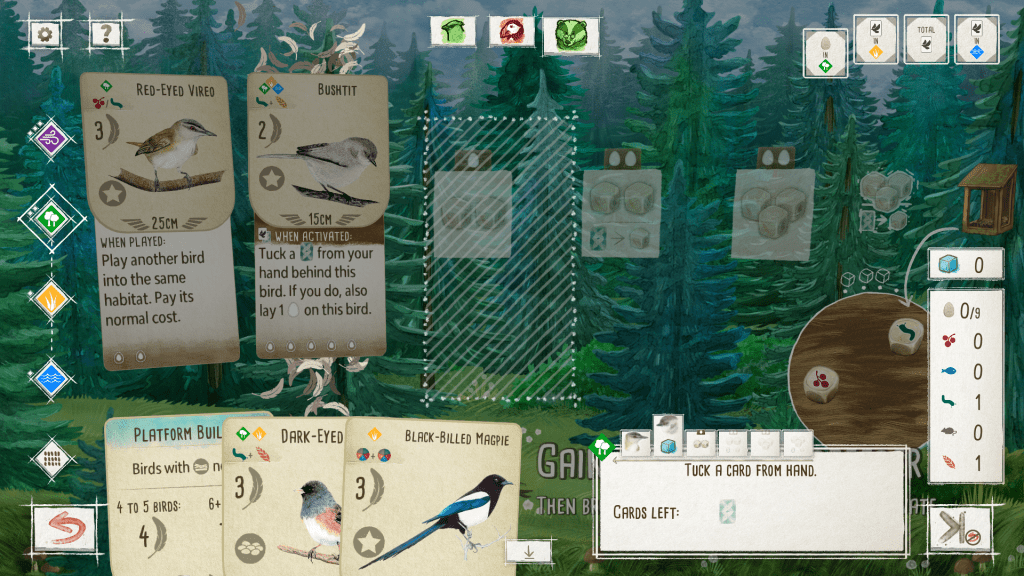
The AI takes care of reminding you of card Activation abilities. Here, when claiming two Food from the Forest, the Bushtit is Activated. The AI asks if I want to tuck a card behind it.
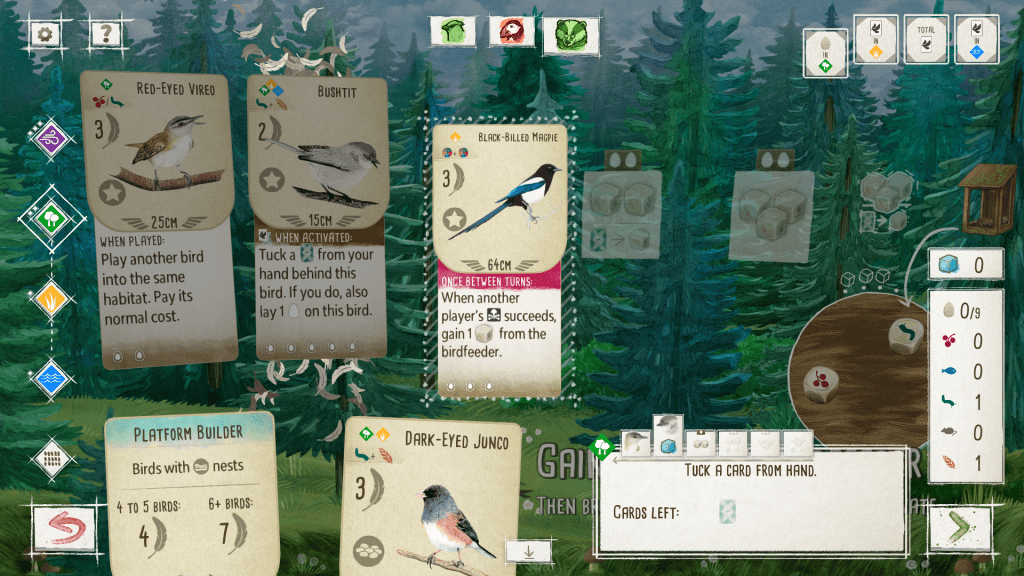
To do so, double-click on the card in your hand you want to tuck or drag and drop it into the space provided.
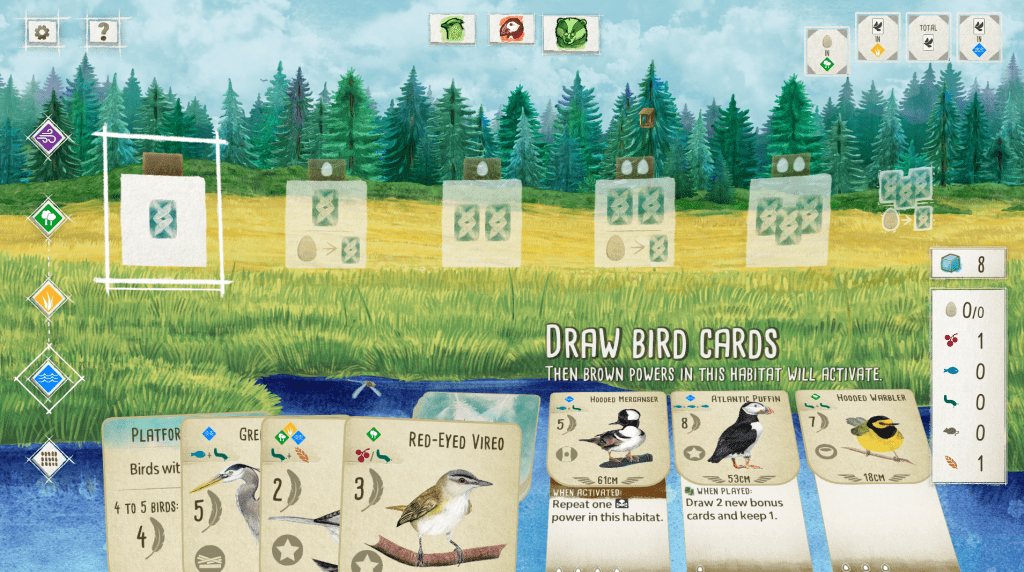
Playing a card in the Marsh works the same way as does taking the Draw a Card action.
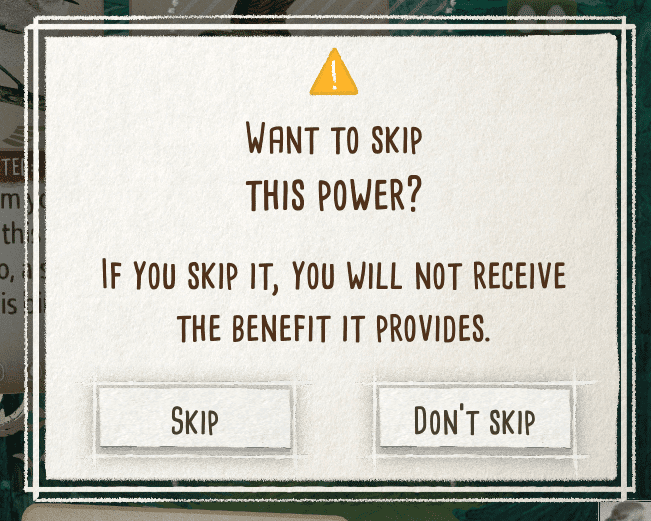
If you choose to skip an action, the AI will check with you to make sure you want to skip it. This is particularly helpful if you, like me, occasionally overlook a power while planning out my next turn.
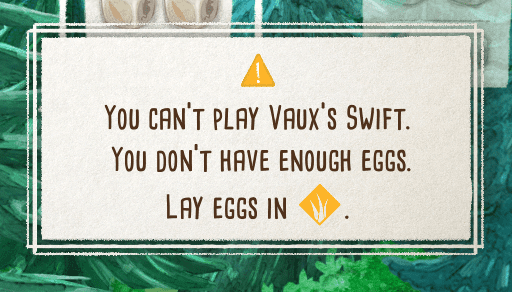
Similarly, the AI will helpfully remind you that you lack the resources to take certain actions.
One last thing: if you don’t like the idea of clicking from Habitat to Habitat, click on the bottom icon in that vertical list of icons to the far left.
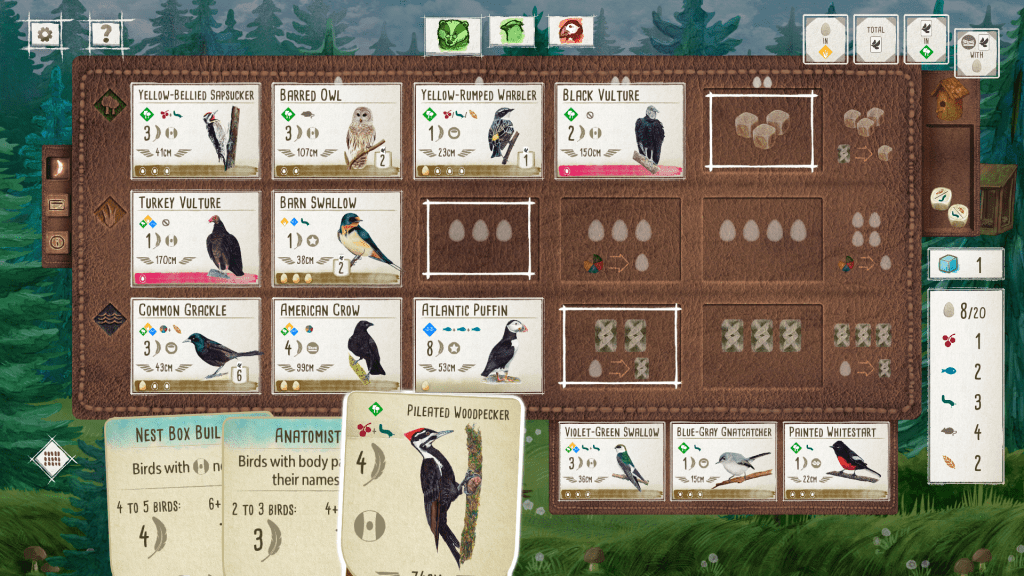
This will give you a more simplified, standard view of your player board. The downside here is that your bird’s Activation powers are cut off to allow birds from all three Habitats to be seen at the same time.
Scoring
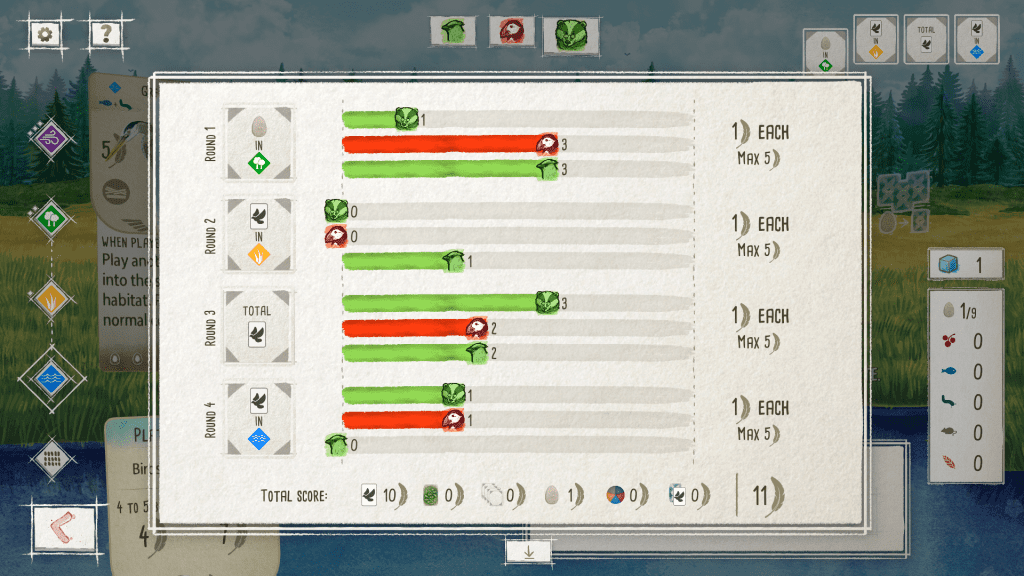
At the end of each round, the AI will score the bonuses for that round. Each avatar will slide from left to right as the bonuses tally.
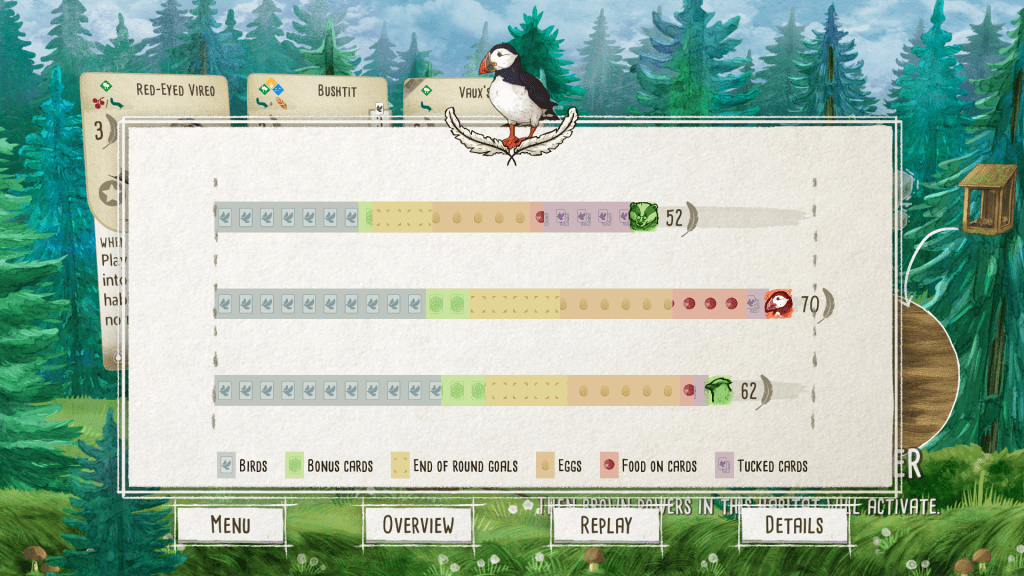
At the end of the game, the AI delivers scores in an equally dramatic manner, with each scoring element being added up for each player.
Settings & More
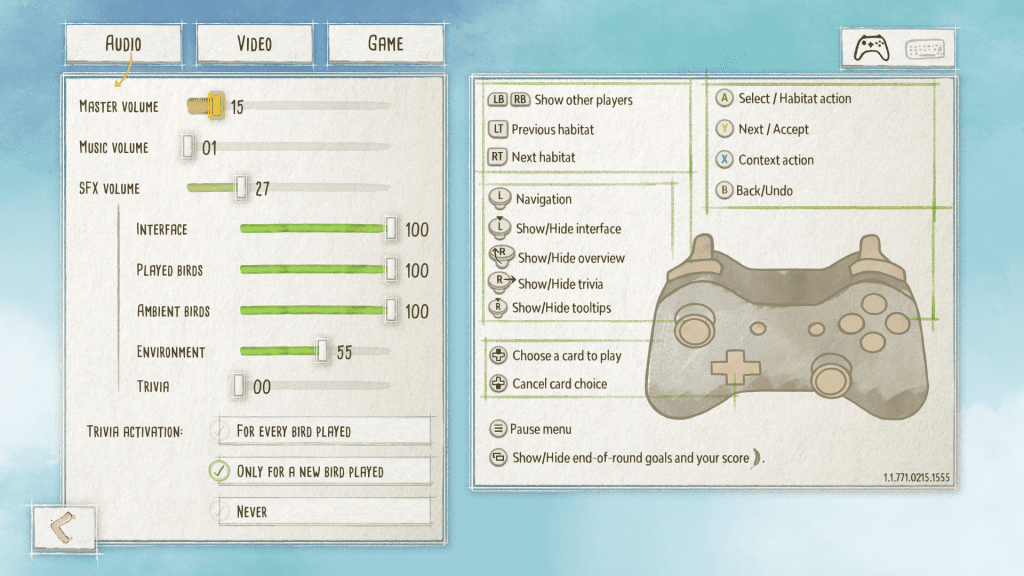
You can access game settings from the main splash screen at the start of the game or from the gear icon in the upper left corner of the screen throughout the game.
Audio settings control the music, bird sounds and other sound effects, as well as the narration of individual bird trivia.
The Steam version also offers settings for video game controllers…
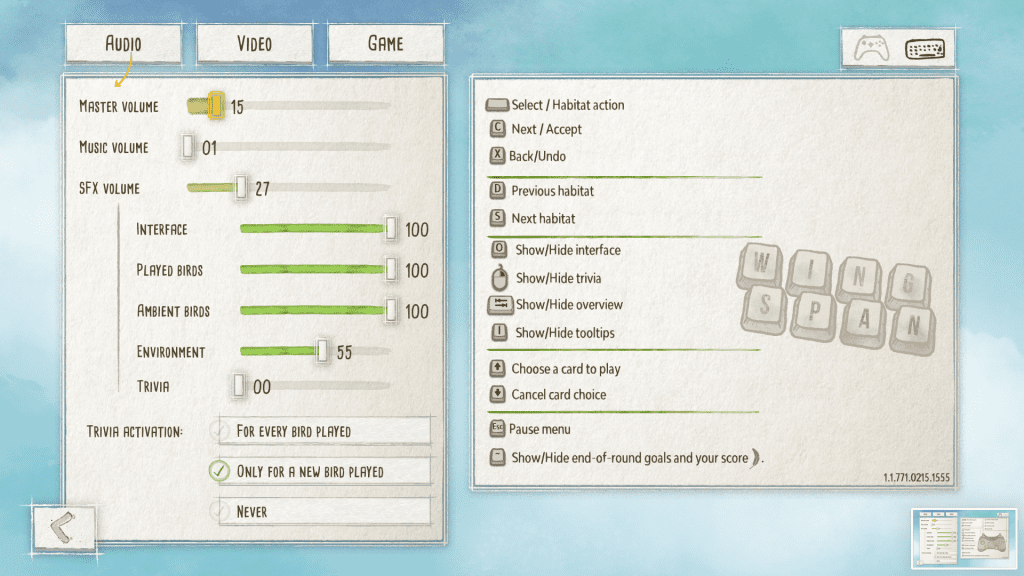
…and alphanumeric keyboards.
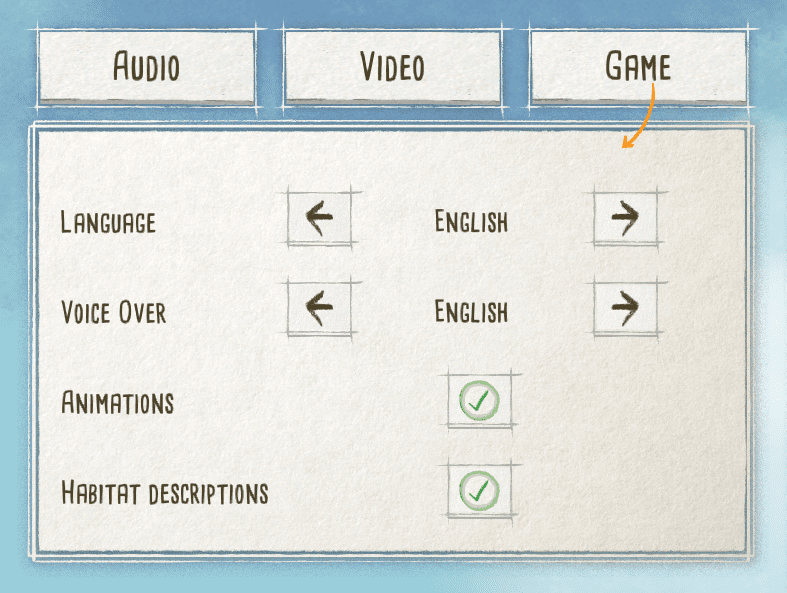
Extras

Another option from the main splash screen is simply labeled Birds.
Clicking this option gives you a list of each bird card that has been played in your games, along with some additional information on each bird. This includes a sample of each bird’s birdsong.
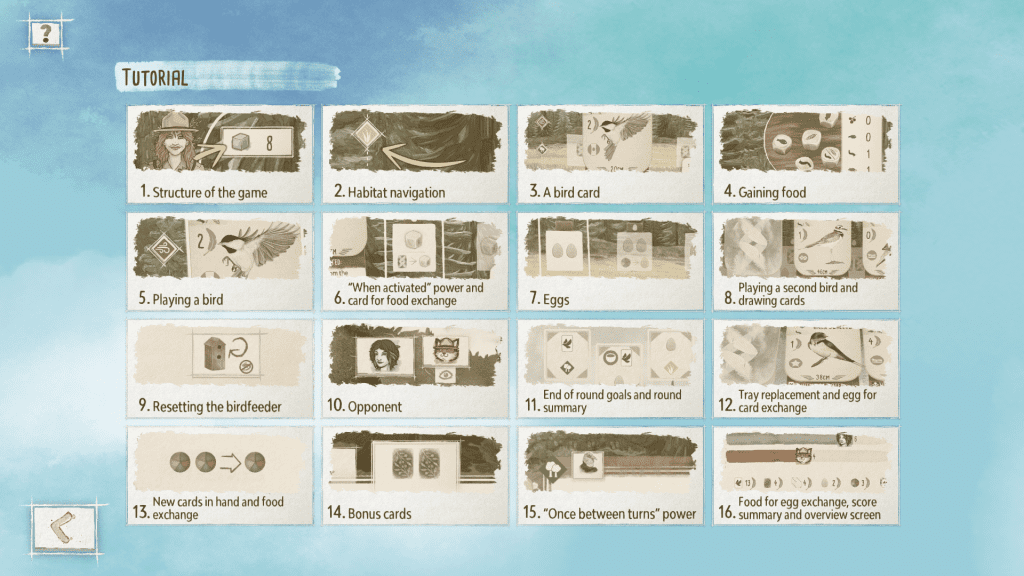
The digital version of Wingspan also has a Tutorial that walks you through each part of the game. It explains these both as individual elements and within the context of a sample game.
Once completed, each section can be revisited as needed.
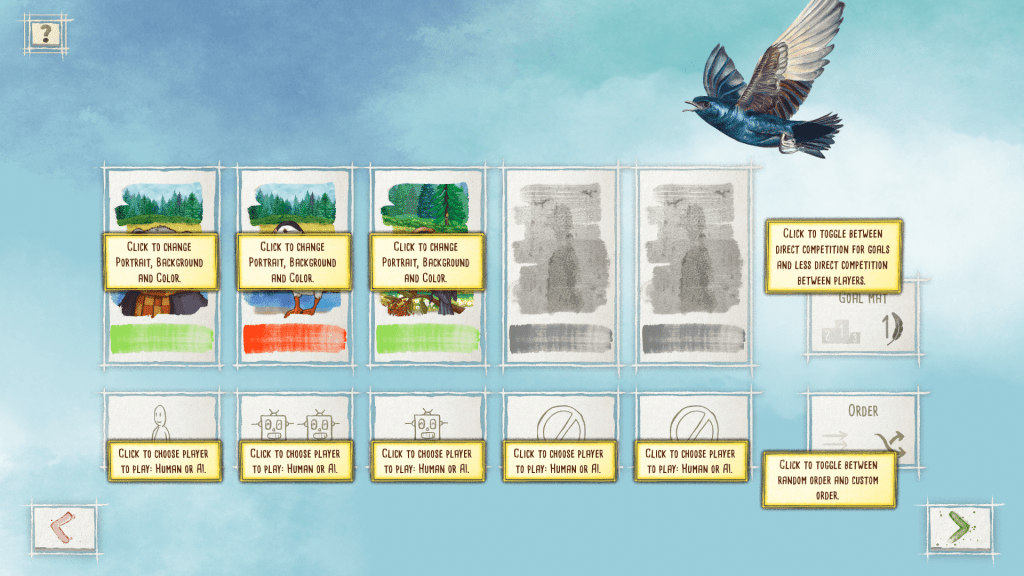
In-game Help options are also available at any time by clicking on the Question Mark icon in the upper left corner of the screen. Clicking it again will cause these to disappear.
Thoughts
On Wingspan In General
The internet has plenty of opinions on Wingspan. Some people love it; some people, like my fellow MeepleMountaineer Mark Iradian, well, not so much.
Personally, I’ve come to like, but not love, Wingspan. Allow me to explain.
I think part of the reason Wingspan has been so successful is that the engine building mechanic is both immediately familiar to regular boardgamers and simple enough to be understood by new gamers.
Add in an entertaining, educational series of cards and you have an approachable game that provides players with a new approach to games and something to do/read between turns.
Wingspan is also a fairly low-stress game. Sure, you’re competing with other players to score the most points, but there are so many ways to score those points that you’d really have to try to not be in the running.
I bought the cardboard version of Wingspan because I knew it would be a hit with our casual gaming neighbors, one of whom is a nature illustrator and is part of a group that keeps track of some of the wild birds in one of our local parks.
I also knew it would be a hit with my weekly gaming group. They’re big fans of Terraforming Mars and the two games have a lot in common—both are card based engine-builders, both are multi-player solitaire games. Wingspan, however, is a much shorter game and since I’m not such a fan of Terraforming Mars, I’m all for a game that ticks the same boxes that doesn’t take all evening to play.
Wingspan’s status, in my mind, as a gateway game, means it also lacks the depth and complexity that I prefer in board games. So, while I appreciate Wingspan for the game it is, it will never reach the level of my favorite games.
On the Digital Version
But what about the digital version of the game, you ask?
I’ll start with my one negative.
As I said, above, Wingspan is largely a multi-player solitaire game. While you’re all playing the same game, there is very little interaction between players. This point is made very obvious in the digital version by all-but hiding the other player boards.
In the cardboard version, all you need to do to see other players’ boards is to look around the table. In the digital version, you have to go hunting for them.
In the top center of each screen there are avatars for each of the players, be they human or AI. When that player is taking their turn, an angular hourglass turns over and over against their avatar. Otherwise, you might not even notice them.
Mouse over them, though…
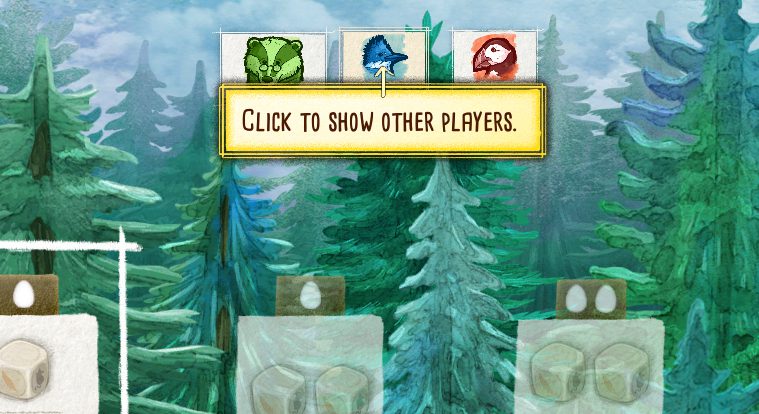
…and you’ll see that they’re your access to your view of the other players’ boards.

In most of my online games, I haven’t even thought of looking at my opponent’s boards, be they AI or human, and this is partially due to the game-interrupting way in which I would need to do so.
(This could just be me, though. When we were discussing our online game of Wingspan, fellow MeepleMountaineer David told me he constantly looks at other players’ boards, even in the digital version.)
Apart from that, I’m a fan of the digital Wingspan. The game plays smoothly, with the AI being a decent, if not overly challenging, opponent. The visuals, as you have seen, are striking and evocative of the habitats they represent.
If you’ve played the cardboard version, you’ll know that the cards are crammed with information. Information represented with small iconography and typeface. (Or, as one of my gaming partners so aptly put it, “Oh, look. Another game made for much younger eyes than mine!”)
The digital version of Wingspan remedies this by filling the center of the game display with individual cards. Icons are easy to see, the text is easy to read. Also, the Egg icons are placed along the bottom of the card, making it much easier to see how many Eggs each card can hold and how many each card is holding.
What are your thoughts on Wingspan and the digital version? Let me know in the comments below!


